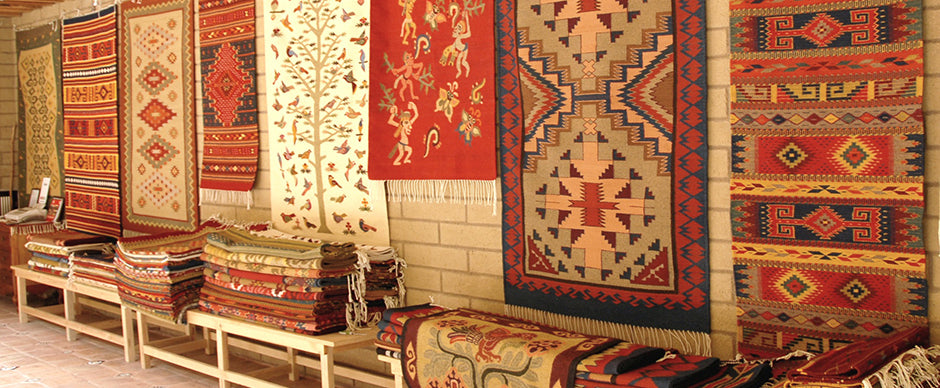
What Are Kilim Rugs?
Share
Kilim rugs, or often simply called kilims, are popular floor coverings and accessories in many homes these days. Perhaps you are wondering where these beautiful rugs came from, or how they are different from the many other carpets and area rugs available on the market these days. Kilim rugs hail from many parts of the world with established carpet- and rug-weaving industries, such as Turkey, Persia, the Caucasus area, the Balkans, and Pakistan.
Kilim rugs are very similar to tapestries which are softer, thinner in quality, and used more as wall coverings or hanging décor. A kilim is flat-woven and is very artistic and creative in style, and it is not uncommon for kilim rugs to be used as hanging accessories rather than floor coverings. If you want to use a kilim as a rug, however, it is sturdy and durable enough to withstand normal wear and tear in the home.
A striking feature of kilim rugs is their beautiful and symbolic design patterns, often depicting folk art from the region where they were woven. The colors, styles, and patterns of kilim rugs reflect their cultural and religious backgrounds. Many kilims are also used as Muslim prayer rugs. Kilims have been recorded in history as early as the fourth and fifth century CE, attesting to their rich cultural background and heritage.
The weaving technique used for kilim rugs differs from that of carpets or pile rugs. A kilim rug is typically interwoven using various colors of wefts and warps (or a flatweave), to produce a flat surface more akin to that of a tapestry weave. Weft strands for kilim rugs are almost always wool, while the less visible warp strands may be cotton or wool. To prevent loosening or unraveling, the weave is usually held together by a fringe, tied in bunches, from the warp strands at the ends of the kilim.
Kilim rugs are generally less expensive than pile rugs or other types of carpet and rug floor coverings. This means for those who are only starting to collect these floor coverings, kilim rugs are great starters. Kilims are particularly attractive to collectors and connoisseurs of authentic village weaving techniques and art forms. These days, Turkish kilim rugs are arguably the most popular especially among Western households.
Kilim rugs are very similar to tapestries which are softer, thinner in quality, and used more as wall coverings or hanging décor. A kilim is flat-woven and is very artistic and creative in style, and it is not uncommon for kilim rugs to be used as hanging accessories rather than floor coverings. If you want to use a kilim as a rug, however, it is sturdy and durable enough to withstand normal wear and tear in the home.
A striking feature of kilim rugs is their beautiful and symbolic design patterns, often depicting folk art from the region where they were woven. The colors, styles, and patterns of kilim rugs reflect their cultural and religious backgrounds. Many kilims are also used as Muslim prayer rugs. Kilims have been recorded in history as early as the fourth and fifth century CE, attesting to their rich cultural background and heritage.
The weaving technique used for kilim rugs differs from that of carpets or pile rugs. A kilim rug is typically interwoven using various colors of wefts and warps (or a flatweave), to produce a flat surface more akin to that of a tapestry weave. Weft strands for kilim rugs are almost always wool, while the less visible warp strands may be cotton or wool. To prevent loosening or unraveling, the weave is usually held together by a fringe, tied in bunches, from the warp strands at the ends of the kilim.
Kilim rugs are generally less expensive than pile rugs or other types of carpet and rug floor coverings. This means for those who are only starting to collect these floor coverings, kilim rugs are great starters. Kilims are particularly attractive to collectors and connoisseurs of authentic village weaving techniques and art forms. These days, Turkish kilim rugs are arguably the most popular especially among Western households.
